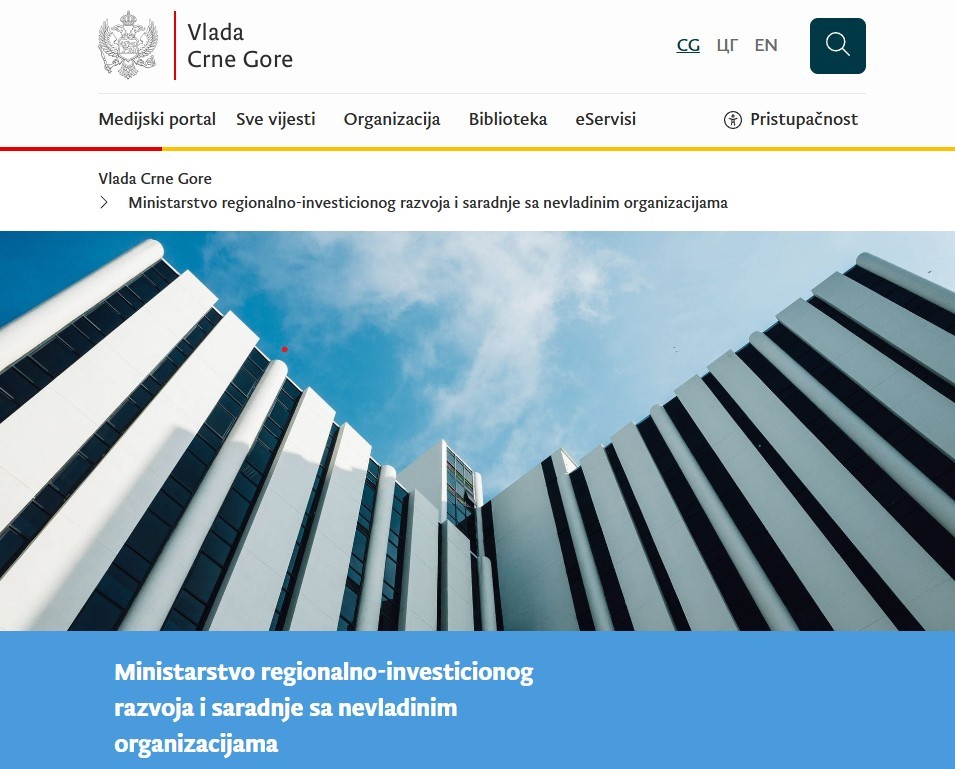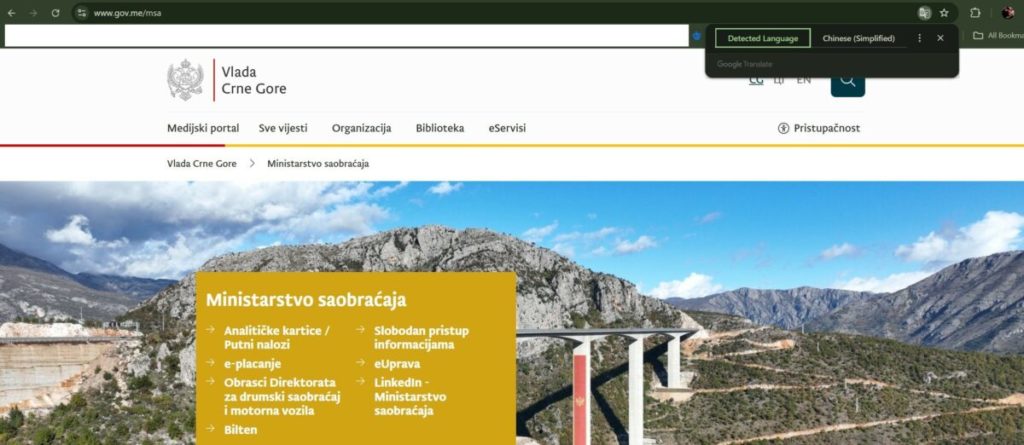Original article (in Montenegrin) was published on 23/4/2025; Author: Marko Vukajlović
If you visit the website of the Ministry of Regional Development, Investments and Cooperation with NGOs, in the upper right corner you’ll find an option to choose the language in which to view the content. Available options include Montenegrin in both Latin and Cyrillic scripts, as well as English.
The IN4S portal published an article titled: (1, 2) (archived: 1, 2)
How the Bosniak minority exercises its rights and what the majority can learn from it?
The article’s lead states: (archived here)
“On the website of the Ministry for Regional Development, Investments and Cooperation with NGOs, users are offered two language options—Bosnian and English. Although Montenegro’s Constitution recognizes several official languages—Montenegrin, Serbian, Bosnian, Albanian, and Croatian—in this case, the absence of Serbian remains noticeable.”
The article goes on to suggest that the language selection on the Ministry’s website likely reflects the political and identity preferences of the Ministry’s leadership, alluding to the fact that the ministry is headed by Ernad Suljevic of the Bosniak Party.
For broader context, it’s important to note that in the restructured 44th Government of Montenegro, both members of the Bosniak Party and representatives of the former Democratic Front are present – such as Milun Zogovic and Maja Vukicevic from DNP, or Slaven Radunovic and Simonida Kordic from the New Serbian Democracy. It’s also relevant that the design of the government website, including this ministry’s, is uniform – offering the same options across all sites.
Therefore, the narrative about the alleged marginalization of the Serbian language in this case does not hold water.
As stated, the ministry’s website (like all ministries) offers content in Montenegrin and English.

The article’s authors attempted to persuade readers that the Bosniak Party, whose minister currently heads the ministry, is doing something that is actually the work of a Google Translate extension, an app for automatic content translation. Even though the disputed article claims that “Bosnian” and “English” were offered, the available language options differ depending on the user.
For example, when the Raskrinkavanje team visited the same website, the options available were Bosnian and Serbian.

Google Translate instantly translates words, phrases, and web pages from English into over 100 other languages.

Users can configure which languages they want to be shown by the application themselves. For instance, when visiting the Ministry of Transport website, the app offered a translation into Chinese.

If you want to add the extension to your browser, the download page clearly states:
“This extension adds a button to your browser toolbar. Click the translate icon whenever you want to translate the page you’re visiting.
The extension also automatically detects if the language of a page you’re on is different from the language you’re using for your Google Chrome interface. If it is, a banner appears at the top of the page. Click the Translate button in the banner to have all the text on the page appear in the new language.”
Based on all the above, it’s clear that the Ministry’s website does not offer only two language options—Bosnian and English, nor does the fact that the minister is a member of the Bosniak Party have anything to do with it.
The disputed article receives the rating: manipulation of facts.
The “Manipulation of Facts” rating is given to a media report that uses known and accurate facts but interprets them in a deceptive manner. These reports generally employ accurate information to draw incorrect conclusions or claims, leading media consumers to draw conclusions that differ from the actual meaning of the presented facts.



